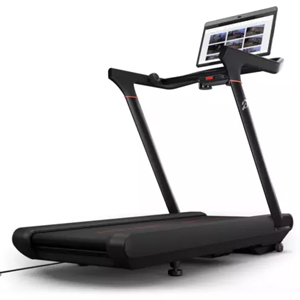Updated: March 20, 2024
The Tread+ has a lot of appealing features, but its exorbitant price might have you considering the Tread as an alternative. But, it’s not just the prices that are different between these two treadmills. The Peloton Tread actually has a few advantages over the Tread+. This comparison looks at all of the differences between the Peloton Tread and Tread+ to help you decide which treadmill is best for you. Some of the top differences this treadmill comparison of the Peloton Tread vs Tread+ looks at are the belt and cushioning, the displays, and the tech specs.
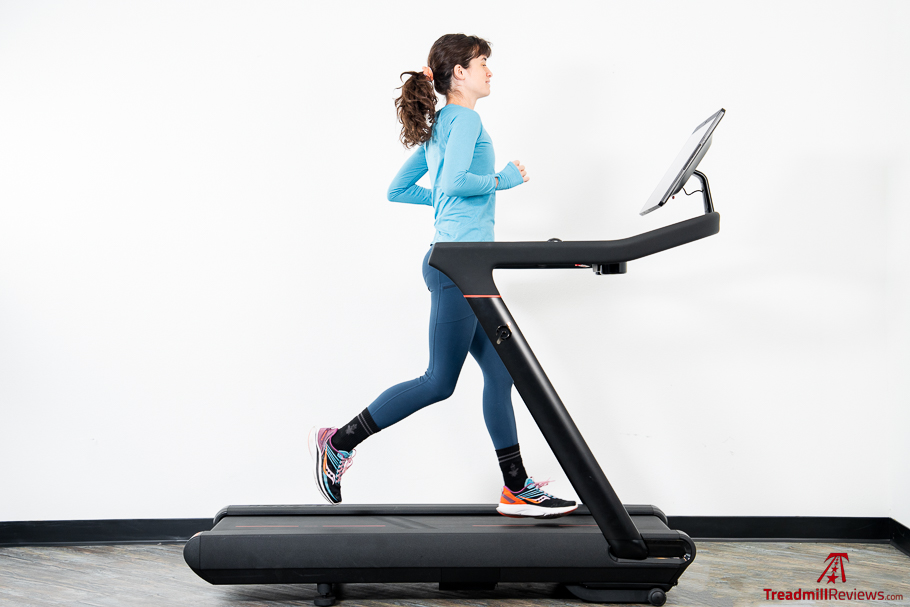
Peloton Tread Highlights
- The Peloton Tread is half the price of the Tread+.
- The Peloton Tread has a sleek and clean build that is lighter weight than the Tread+.
- The Tread’s connectivity is better with Bluetooth 5.0 and USB-C charging.
- The screen and audio quality are great.
- Peloton’s Tread classes are super fun and engaging.
Peloton Tread+ Highlights
- The Tread+ has a cushioned slat belt which provides a unique underfoot experience.
- The display is 32 inches and provides a premium viewing experience.
- The incline range is 0 to 15%.
- Free Mode allows you to manually move the belt.
- The motor is an AC motor.
- The Tread+ has been upgraded with a new rear safety guard.
Peloton Tread Treadmill Specs
- Footprint: 68” L x 33” W x 62” H
- Deck Size: 20” x 59”
- Motor Size: 3.0 HP
- Weight Capacity: 300 lbs
- Product Weight: 290 lbs
- Speed Range: 0 to 12.5 mph
- Incline/Decline Range: 0% to 12%
- Cushioning: firm
- Step-Up Height: 8”; low deck height
- Warranty: 5-year frame; 3-year motor and belt; 12 months parts and labor
- Ceiling Height Requirement: user height + 20”
Peloton Tread+ Treadmill Specs
- Footprint: 75” L x 36.5” W x 72” H
- Deck Size: 20” x 67”
- Step-Up Height: 11”
- Motor Size: 2.0 HP AC
- Weight Capacity: 105 to 300 lbs
- Product Weight: 455 lbs
- Speed Range: 0 to 12.5 mph
- Incline/Decline Range: 0 to 15%
- Cushioning: slat belt cushioning
- Warranty: 5-year frame, 3-year motor, 5-year belt, 1-year parts
- Ceiling Height Requirement: user height + 24”
Treadmill Comparison of The Pelton Tread vs Peloton Tread+
Build Quality
While both treadmills have a premium price, the Peloton Tread+ is certainly the more premium treadmill. We are a little disappointed that Peloton did not take the time to update the Tread+ while it was recalled. So while it may feel higher-end, it’s also older than the Tread. Both treadmills are well-built but aren’t quite as impressive as their price points suggest. For this reason, I lean toward the Tread over the Tread+ when it comes to build quality.
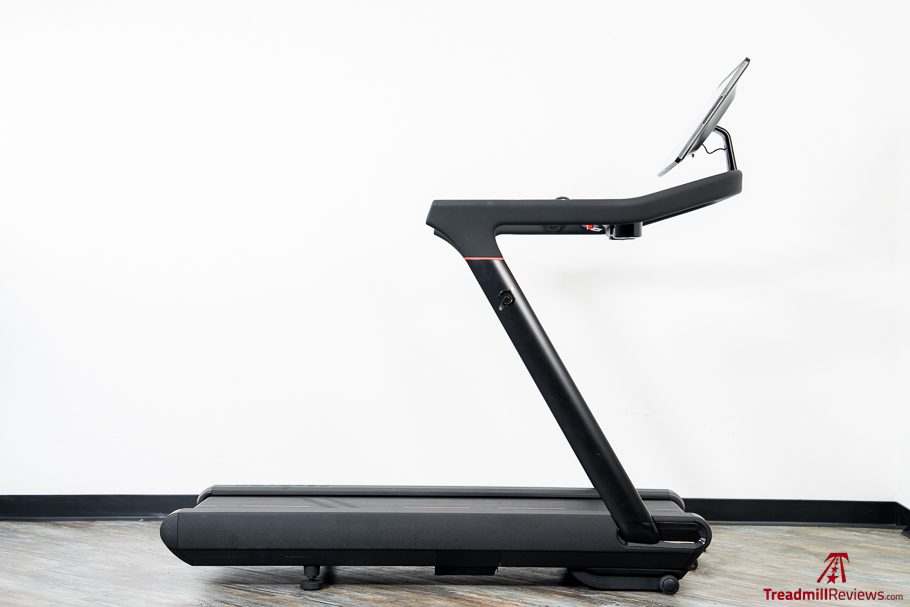
Frame
The Tread and Tread+ have carbon steel frames, including the platform and handrails. They both have z-shaped frames, but the Tread+’s uprights and console supports are much thicker to support the larger screen. Considering they have the same weight capacity and similar aesthetics, I rank them as equal here.
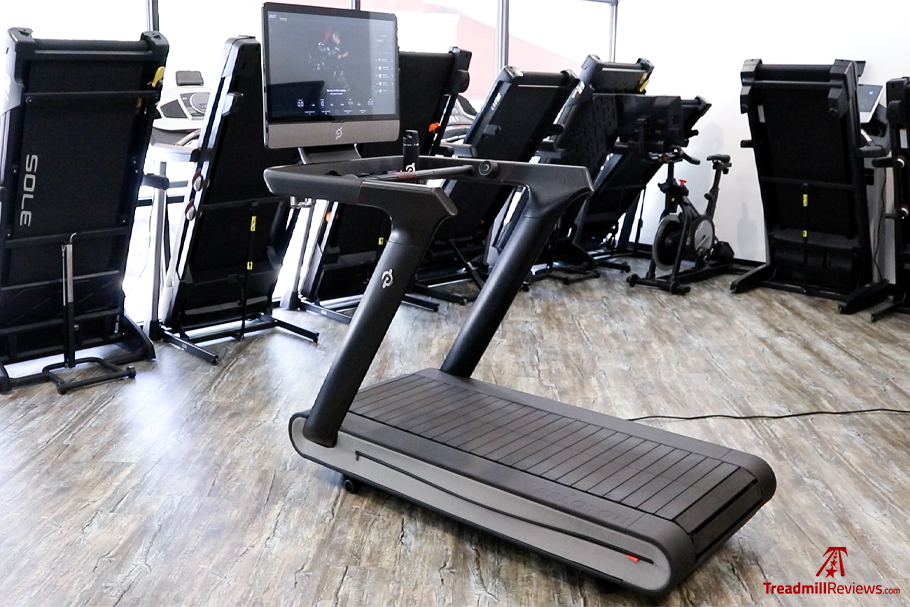 The uprights are attached to the deck, which moves the entire console when the deck inclines.
The uprights are attached to the deck, which moves the entire console when the deck inclines.
Motor
The Tread has a 3 HP DC motor while the Tread+ has a 2 HP AC motor. Here at Treadmill Reviews, we understand that horsepower isn’t the only factor worth considering when it comes to motors. The Peloton Tread has so far performed better than other 3 HP motors. As for the Tread+, an AC motor is more commonly found in commercial-grade machines, so we are happy with this upgrade. We would like to see a better warranty on both of these machines’ motors. The warranty is currently only 3 years, which is particularly disappointing for the pricier Tread+.
Running Surface
The running surface is the most prominent difference between the Tread and Tread+. The Tread uses a traditional slat belt with a red dashed stripe down the middle. 20” x 59” surface is plenty of space for running up to the maximum speed of 12.5 mph. The step-up height is a low 8 inches. The Tread+ has a slat belt with a 20” x 67” running surface. Keep in mind that the ends of the belt are curved, so the functional surface is shorter. The Tread+ has an 11-inch step-up height, which may be more difficult for some users to negotiate.

The Tread+ and Tread do not have motor hoods. The motors are located beneath the treadmill decks, so you aren’t in any danger of knocking your foot against the hood. This gives both treadmills more functional space compared to standard 60-inch treadmill running surfaces.
The Tread is firmer than treadmills from NordicTrack and Horizon for comparison. The Tread+ has some cushioning thanks to the slat belts. Many users really like the underfoot feel of running on slats while others feel that slats are more challenging to run on. I really like Woodway’s comparison of slat belt treadmills to running on a forest floor covered in pine straw. It’s soft, but it is harder to run fast because you lose a lot of energy to the running surface.
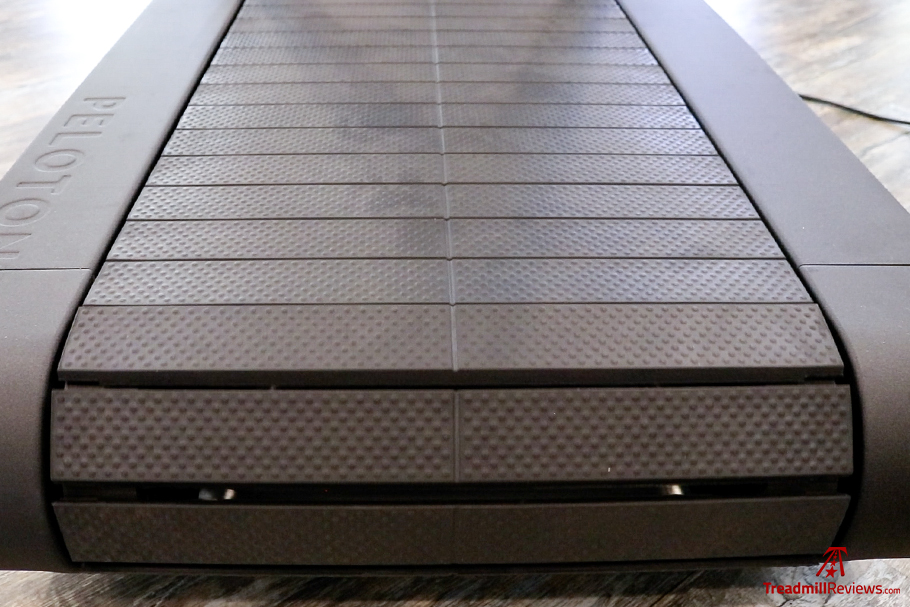
Both treadmills offer a good experience. Because the underfoot feel is so different, I can’t declare a winner. This one is up to you! I know slat belt runners feel very strongly about a slat belt treadmill’s superiority, but that doesn’t mean it’s for you.
Folding/Storage
The Peloton Tread and Tread+ do not fold. They are not easy to move around or store. The Tread is easier to move than the Tread+ due to its smaller size and lighter weight. The Tread weighs 290 lbs compared to the Tread+’s 455 lbs. Neither treadmill is a good option for users who want a discreet folding treadmill.
The Tread+ is considerably larger than the Tread. It measures 75” long by 36.5” wide by 72” high. The Tread is 68” long by 33” wide by 62” tall. You will need a lot more room to accommodate that massive Tread+.
Incline/Decline
The Tread+ has the superior incline range of 0 to 15% compared to the Tread’s 0 to 12.5%. Both treadmills adjust by 0.5% increments. Neither treadmill declines. One thing I like about both treadmills is that the console rises with the treadmill deck, which keeps the screen at a better viewing height.
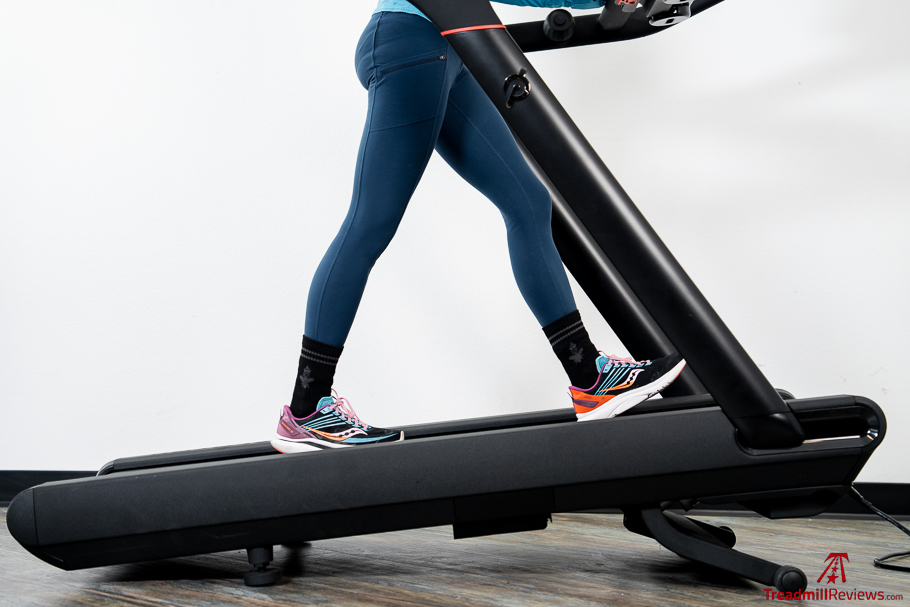
Features & Accessories
As Peloton treadmills, each of these machines is designed to work with the Peloton training content as smoothly as possible. The Tread and Tread+ have a lot of overlap in their features, but we will be sure to highlight where they differ to help you with your decision-making. The Tread is a newer model. Despite being more affordable than the Tread+, some of the Tread’s tech specs are better than the Tread+. We wish Peloton could have updated these features during the Tread+’s recall.
Console Overview
The layouts of the console are quite similar. They are very clean. Neither treadmill relies on individual buttons for treadmill speeds and incline settings, which really simplifies the look. The treadmills use spinning knobs with jump buttons in the center to change the speed settings. This is my favorite way to adjust a treadmill’s speed. It feels super intuitive and smooth to use while running. Spinning the knob adjusts the speed by as little as .1 mph while the jump button rounds you up to the next speed level. The incline option works the same, moving by .5 on the dial and 1 on the jump button.
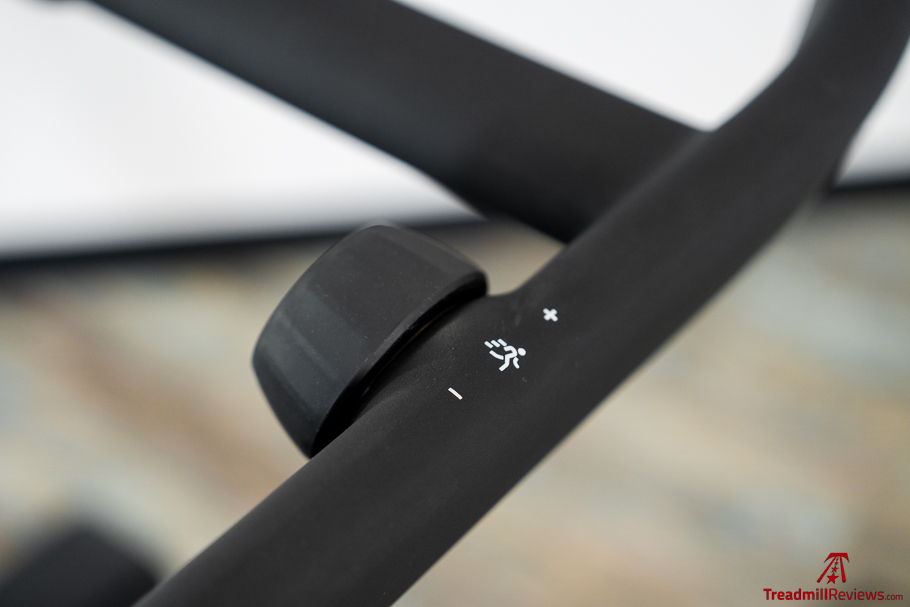
Screen
The Tread has a 23.8-inch touchscreen while the Tread+ has a 32-inch screen. It’s obvious which treadmill has the better viewing experience, but I’m more than content with the smaller option on the Tread. I’m 5’4”, so I’m pretty close to most treadmill screens when I’m training, and I tend to prefer a screen size of 10 to 22 inches with the higher end being even more favorable. Taller users seem to favor a larger screen size because of their increased distance from the console. Thus, your preference may depend on your height somewhat. The Tread+’s 32” screen is the luxury option. Both screens have fantastic quality with anti-glare properties and crisp detail.
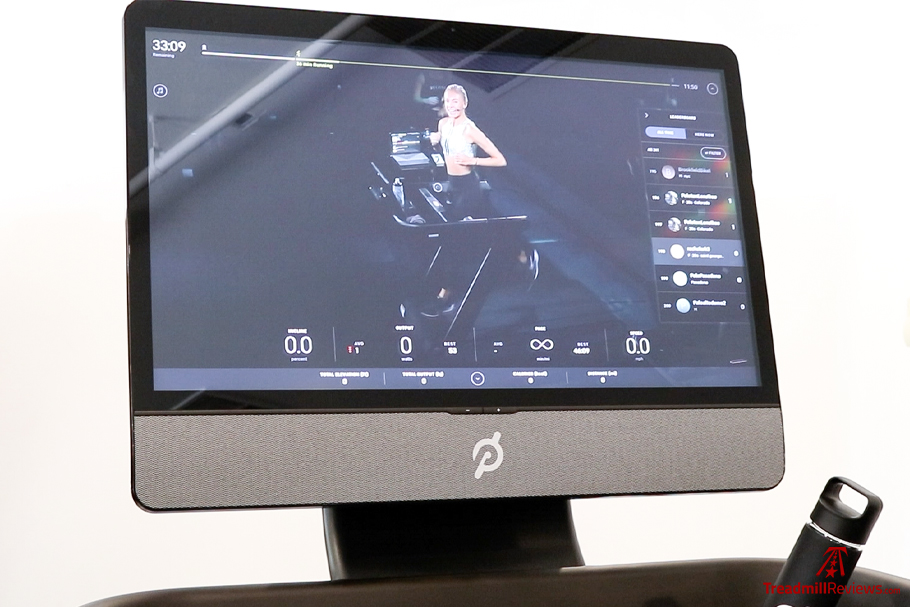
The screens do not rotate, so you can’t view content while training beside the treadmill. I really like the rotating screens on the NordicTrack commercial series, and it was a feature I wish Peloton offered.
Audio
The Peloton Tread has front-facing speakers at the bottom of the screen while the Tread+ has a soundbar at the top of the screen. The Tread also has two rear-facing woofers. The audio quality on Peloton equipment has been great, and both treadmills showcase their onscreen classes’ music very well.
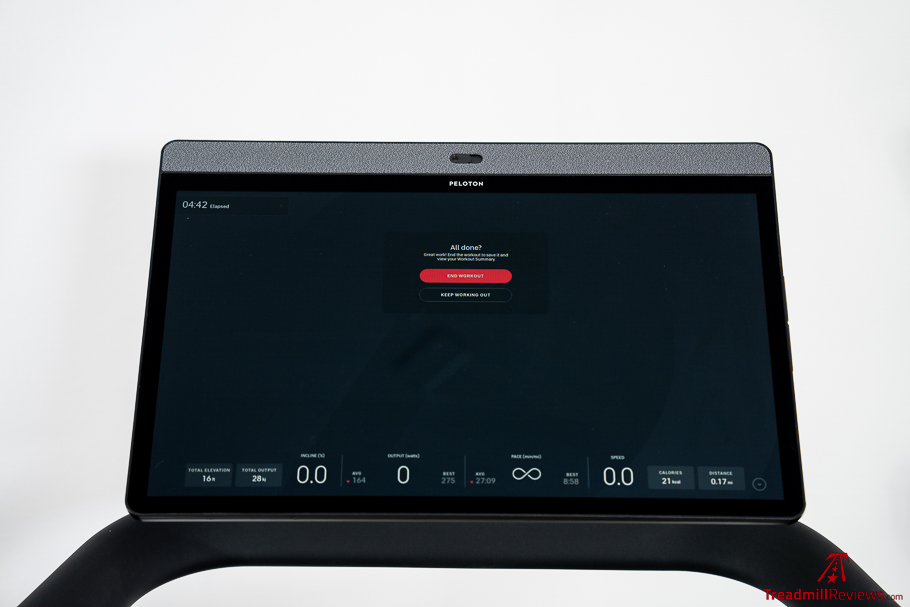
You can pair Bluetooth headphones with either treadmill or plug in wired headphones. It’s very easy to pair compatible headphones and creates a more immersive experience with the classes without disturbing those around you.
Connectivity
For connecting your treadmill with other devices, the Peloton Tread has superior options. It has Bluetooth 5.0, USB-C charging, and ANT+. You can connect a compatible Bluetooth heart rate monitor. Of course, you also need to connect the treadmill to your home WiFi to access the training content.
The Tread+ has Bluetooth 4.2 connectivity, USB-A charging, and ANT+. These options aren’t bad, but you can tell that the Tread+ is an older machine. Again, WiFi is essential to the Tread+.
Storage
The Peloton treadmills have two cup holders. The Tread+ has a larger storage tray where you can keep any necessary items. The Tread has a small storage compartment that is just big enough to awkwardly hold a phone.
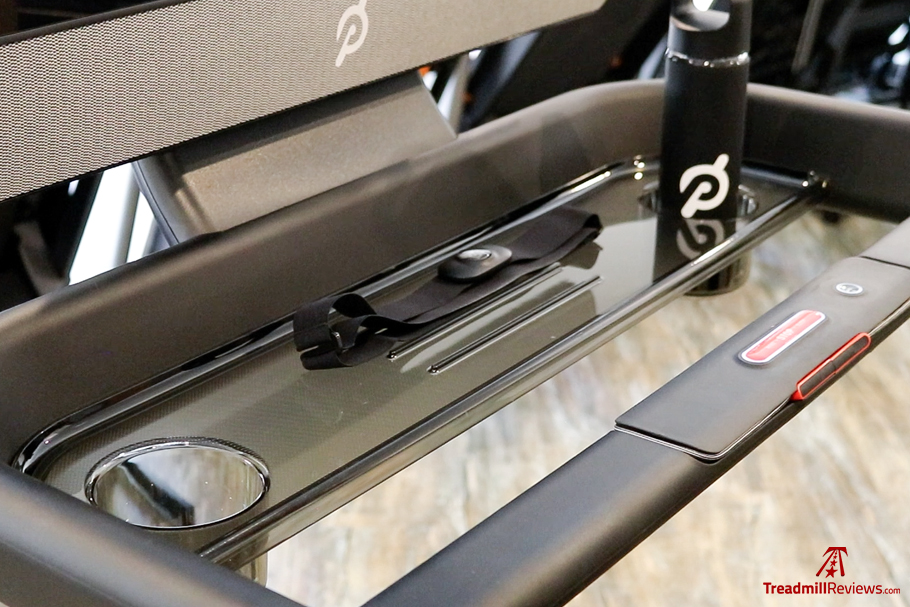
Safety Features
The Tread and Tread+ have safety keys. The screens will lock automatically when not in use to prevent unauthorized use by children. A passcode is required to start the treadmills up initially. The Tread+ has also been upgraded with a rear safety guard that will stop the belt in an emergency. This feature was implemented after the Tread+’s recall. Without the safety guard, the Tread+ resulted in multiple injuries and one death. Be sure to keep pets and children away from the treadmill regardless of its safety features!
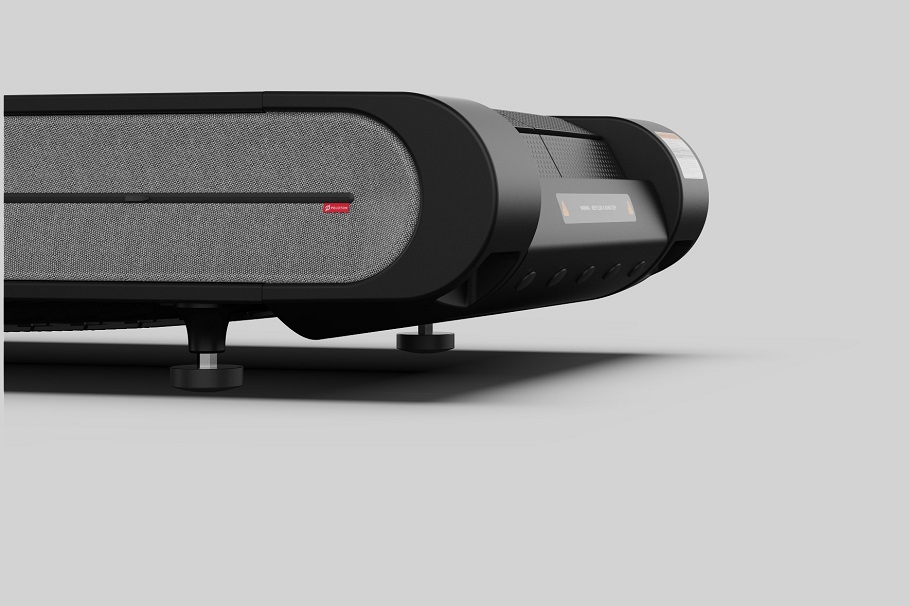
Free Mode
The Tread+ has free mode which disengages the motor from the belt. You can then use the treadmill kind of like a manual treadmill. You can’t really run on the belt like a manual treadmill, but you can walk with your hands braced against the stability bar or sled push. The Sole ST90 is another slat belt treadmill that has this feature. The Peloton Tread does not have a free mode, so if you take the Peloton classes that include this feature, you cannot follow along there.
Performance
These treadmills are designed for runners of all abilities. Whether you are an advanced runner or a newbie, the Tread or Tread+ should support your training routine just fine. I’ve been satisfied with all the workouts I have done. I do like the Peloton Tread and Tread+ more for long runs and interval runs. I prefer a treadmill like the NordicTrack 2450 for recovery activities because it is softer and bouncier. The Tread and Tread+ are great for exercisers who want to challenge themselves.
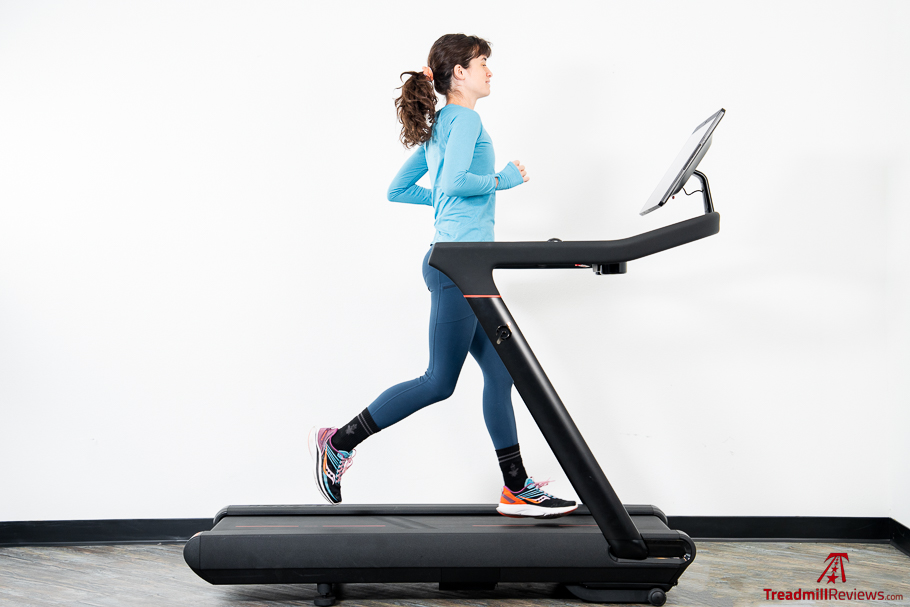
These are not treadmills for the runner or walker who primarily trains outdoors. Their high price, cost of the subscription, and training style support regular or even daily use. While you certainly could use them infrequently, either the Tread or the Tread+ would be quite the commitment for a rainy day treadmill only.
Subscription & Content Options
Peloton training content is some of the best. I have been hooked on their outdoor content, and I always enjoy using their treadmill classes whether or not I’m on a Peloton brand treadmill. The cost of a subscription with a Peloton machine is higher than the app alone. It’s $44 for the all-access membership compared to the $12.99 to $24 for the App One and App+ memberships respectively.
Peloton makes walking, hiking, and running classes for the Tread and Tread+. You can take all of the treadmill classes on either machine. There are tons of on-demand classes and if your schedule aligns, there are also live classes to take. Each class has a custom playlist, and the hard running or sprint intervals are often timed around an uplifting and energizing chorus. Peloton has done the best job of ingraining music into their classes, and it helps that their trainers have great music taste.
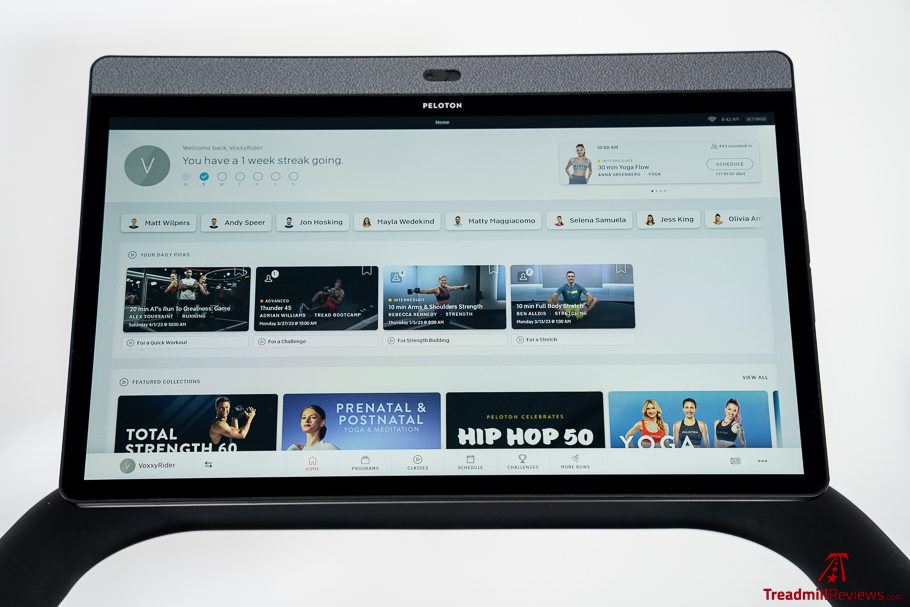
You can also take scenic classes, watch entertainment, or manually train on the Peloton treadmills. One of my favorite class alternatives is the Lane Break game. This game was originally for the Peloton bikes, but it has made its way to the Tread and Tread+. You can choose a music artist you like and a difficulty level. Then you are challenged to switch lanes by adjusting your incline and hit the right speed for an additional bonus. It is really fun, and a great way to vary your training.
The Tread and Tread+ have very limited training options without a membership. At the time of writing this comparison, you can train manually or take a sample Peloton class. You cannot view your past workouts or use any of the other content options.
Bottom Line Review: Peloton Tread vs Peloton Tread+
The Peloton Tread and Tread+ are both fun treadmills that pair with one of the top fitness platforms. The Tread+ is about the price of two Peloton Treads, so there’s a vast price difference between the two machines. My favorite Peloton alternatives to use with Peloton training content are the Horizon 7.8 AT and the Sole ST90. You should go with the Tread+ if you are dead set on a slat belt treadmill and a large display. Free Mode is also a nice feature on the Tread+ that the Tread does not have. However, I don’t feel that my experience on the Peloton Tread is lacking at all. The screen and connectivity are great, and I really like the speed and incline adjustments on this treadmill.
